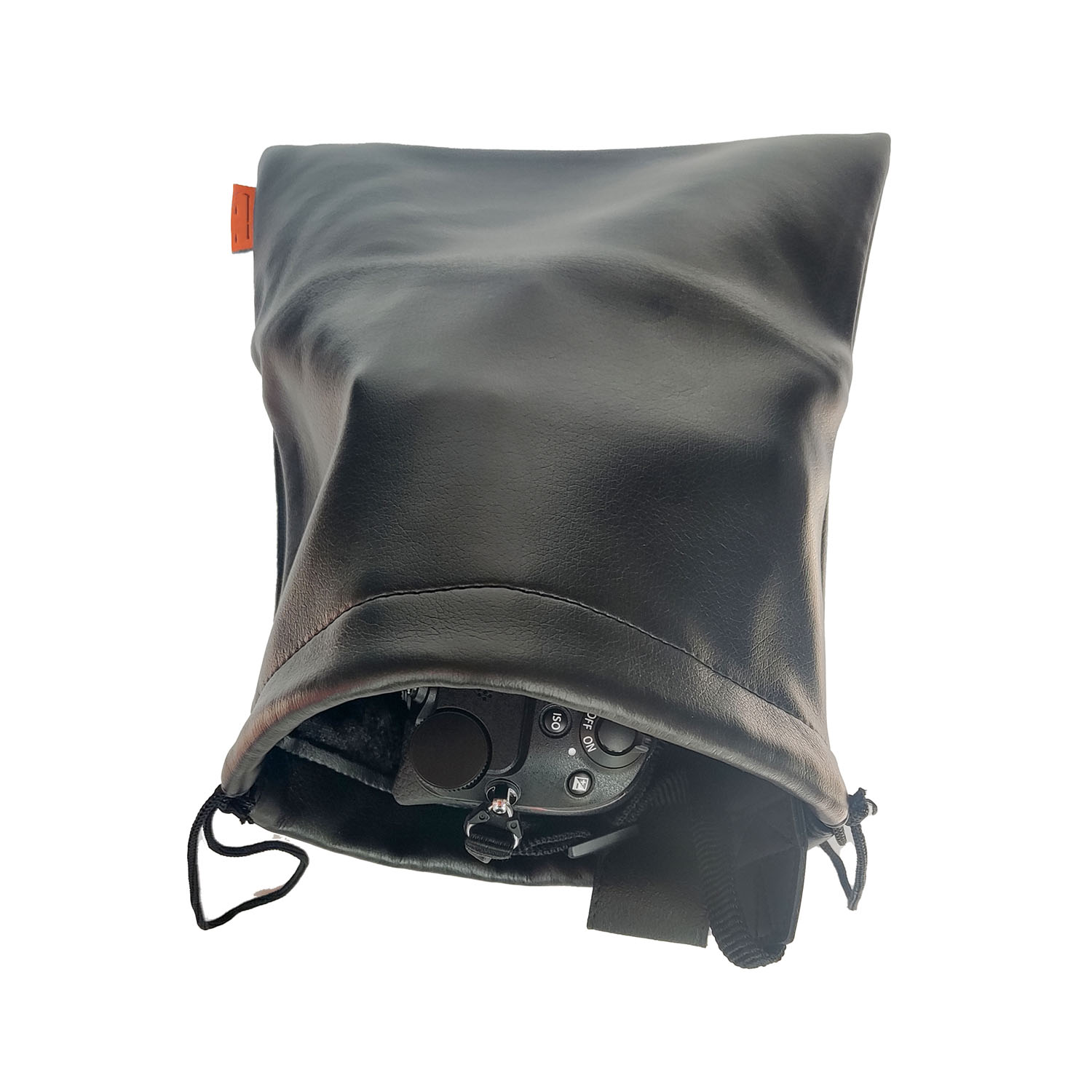A Photographer’s Best Companion: The Ultimate Guide to Camera-Optimized Drawstring Bags
For photography enthusiasts, every shutter click captures a fleeting moment of irreplaceable value. Yet, even the slightest negligence in gear storage can result in irreversible loss. While most drawstring bags on the market meet the basic requirement of "fitting the gear," they often fall short in critical aspects—shock absorption, ease of access, and adaptability to diverse environments. Scratches from lens collisions during bumpy rides, the anxiety of water seepage during sudden downpours, or missing the perfect shot while fumbling for a battery—all point to the shortcomings of traditional designs. As lightweight and professional-grade gear becomes a necessity for outdoor shoots, it's time to re-examine the overlooked details in gear storage—perhaps the first step toward unlocking creative freedom.
Why Do Photographers Need a Dedicated Drawstring Bag?
1. Quick Access, Never Miss a Moment
- Conventional Bags: Difficult to find gear quickly; zippers may scratch the lens.
- Our Solution: Side Quick-Access Openings
- Discreet magnetic flaps on both sides allow instant access to spare batteries or filters with a simple flick of the finger—no need to open the main compartment while swapping lenses or memory cards outdoors.
2. Bump Protection, Peace of Mind
- Conventional Bags: Equipment rolls freely, making scratches inevitable.
- Our Solution: Adjustable Dividers
- Built-in Velcro tracks and removable padded dividers (available in 2cm and 3cm thicknesses) allow for customized compartments—perfect for DSLRs, mirrorless bodies, or drone controllers.
3. Travel Light, Go Anywhere
- Conventional Bags: Bulky and heavy, adding travel burden.
- Our Solution: Ultralight Waterproof Nylon
- Made from 210D Oxford nylon (only 350g), it’s water-resistant and folds down to palm size—easy to stash in your luggage or backpack.
The 5 Core Metrics of a Professional Camera Drawstring Bag
1. Shock Resistance
- Myth: Thicker = Better protection
- Truth: Foam density is more critical than thickness
- Test: Drop a 1kg item from 1.2m; inspect deformation on the contact surface.
2. Waterproof Rating
- Common Trap: "Water-repellent" ≠ Waterproof
- Key Metric: Hydrostatic pressure ≥ 3000mm (withstands moderate rain for 30 minutes)
3. Ergonomic Design
- Golden Ratio: Bag width = shoulder width × 0.7 (approx. 24cm for Asian male average)
- Real-World Data: Curved base design reduces shoulder strain by 17%
4. Accessory Compatibility
- Must-Have: Secure storage for at least 3 sizes of lens caps + 2 spare batteries
5. Environmental Tolerance
- Extreme Test: Bend 200 times after freezing at -15°C for 24 hours—no cracking
Gear Pairing Guide for Different Stages of Photography
| User Type |
Recommended Setup |
Pro Tip |
| Beginner |
Single-layer basic bag + removable divider |
Avoid cheap EVA dividers (can shed particles and contaminate CMOS) |
| Intermediate User |
Dual-compartment structure + expansion straps |
Avoid metal hooks (risk of hitting camera body) |
| Professional |
Modular system + waterproof sealed compartments |
Avoid dark inner lining (makes gear harder to locate quickly) |
Practical Design for Real-World Scenarios
Scenario 1: Street Photography
- Pain Point: Lens changes cause bag to swing if worn around the neck
- Fix: Non-slip silicone strips on the opening let you stabilize the bag at your waist or crossbody strap, enabling one-handed operation
Scenario 2: Mountain Hiking
- Pain Point: Dust and rain easily enter the bag
- Fix: Hidden drainage holes at the bottom release water after rain; widened drawstring top forms a 3D dust cover when tightened
Scenario 3: Studio Organization
- Pain Point: Small accessories (SD cards, lens caps) often get lost
- Fix: Transparent inner pockets with color-coded compartments make it easy to locate memory cards, cleaning cloths, and other items at a glance
Creative Ideas to Breathe New Life into Old Gear
Many photographers told us, “I've bought too many storage bags—most just sit unused.” So we introduced:
1. DIY Repurposing Guide
- Cut old drawstring bags into lens cloth pouches
- Use leftover dividers to create padded tripod corner protectors
2. Trade-In Program
Send back your old bag for 30% off a new one. Returned fabrics are upcycled into camera straps and gifted back to users.
Real-World Reports from Global Photographers
Case 1: Polar Photographer
- Challenge: Standard fabrics become brittle at -40°C
- Solution: Our custom Arctic Pro series
- Result: 3 consecutive years of Antarctic expeditions without gear freeze damage
Case 2: War Correspondent
- Challenge: Needs to conceal equipment quickly
- Solution: Custom desert camo with anti-infrared detection coating
- Result: 50% reduction in gear visibility during conflict reporting
Case 3: Underwater Photography Team
- Challenge: Equipment crashes during boat turbulence
- Solution: Floating inner lining + vacuum-secured compartments
- Result: Zero gear damage during open-ocean shoots
Conclusion
The essence of gear storage lies in striking the perfect balance between protection and accessibility. From scientifically tested shock resistance and waterproof ratings to millimeter-precise ergonomic design, from real-world field data to cost-effective DIY hacks—every detail confirms this: a truly photography-ready drawstring bag is not just a container, but a smart extension of your workflow. It should be as steady and silent as a tripod, as adaptive and versatile as a filter kit.
When specs translate into real-world comfort, and user frustrations fuel thoughtful design, storage ceases to be a burden—it becomes an invisible ally in your creative journey.



 We like to do design according to all the customers' requirements, or offer them our new designs. With strong OEM/ODM capabilities, we can fill your sourcing demands.
We like to do design according to all the customers' requirements, or offer them our new designs. With strong OEM/ODM capabilities, we can fill your sourcing demands.